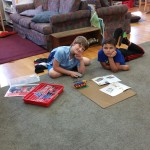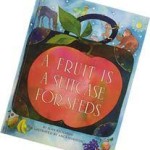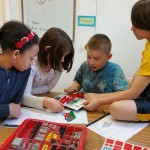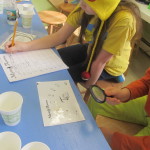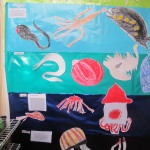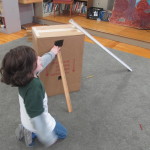In past years, our students who are now 3rd, 4th, and 5th graders learned about simple and powered machines using Legos. They investigated structures and forces, levers, and wheels and Read More >>
The Seed Within
In this science class, the students read a book called “A Suitcase for Seeds.” The students were asked to make predictions about what they thought the seeds would look like, Read More >>
Lego Class
In Lego class 2nd and 3rd graders have been learning about simple and powered machines using hands-on activities. They investigated structures and forces, incorporating both rigid and flexible shapes in Read More >>
Salt Water Biome – the Ocean
Students in grades 1, 2 and 3 were part of a unit that recently studied the ocean. Students working with a partner explored the characteristics of a specific layer of Read More >>
Paper Airplanes
How do airplanes fly? That is a question that our younger students (K-1) explored during Investigations by making paper airplanes and testing them. First they made the classic Dart. They Read More >>
Forensic Science
Students in grades 3, 4 and 5, used what they learned earlier about physical and chemical changes, and their powers of observation to identify a mystery white powder. Over a Read More >>
Sink or Float?
Students in Kindergarten through Second Grade participated in a class where they explored items that would sink or float. As scientists, they first made predictions on six different items and then Read More >>
The Microscopic World
In December 2016, Students in grades 6 & 7 began a unit on exploring microscopes and discovering things too small Read More >>
Chemistry 101
What is matter? What are the three states of matter? How do atoms behave differently in solids, liquids and gases? Students in grades 3, 4 and 5 love this hands Read More >>
Ramps
During Investigations the youngest children at our school explored inclined planes using ramps. They rolled marbles down ramps and measured the distances each marble rolled. They varied the slope of Read More >>
- « Previous Page
- 1
- …
- 5
- 6
- 7
- 8
- 9
- …
- 13
- Next Page »
